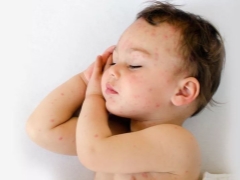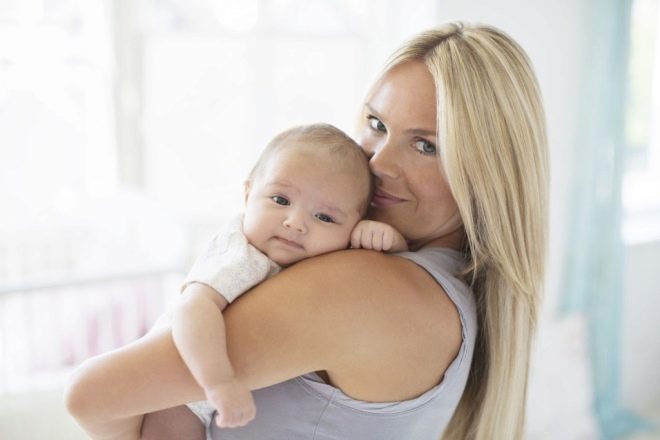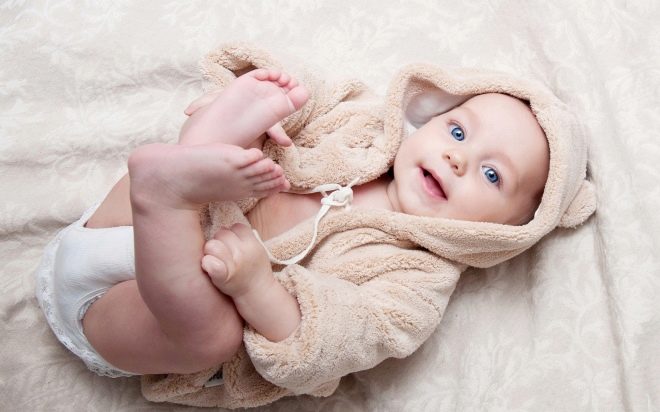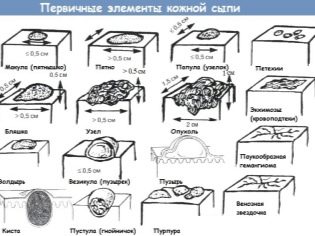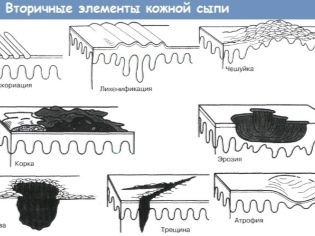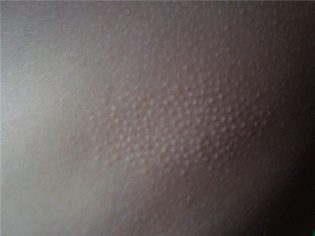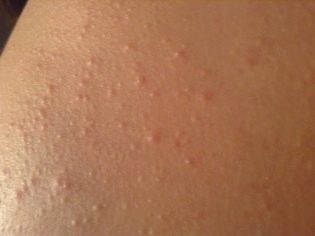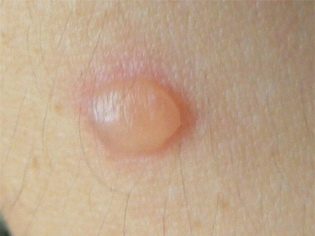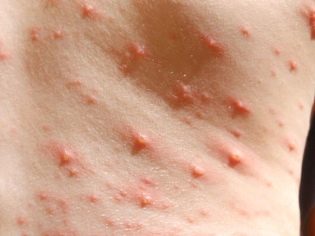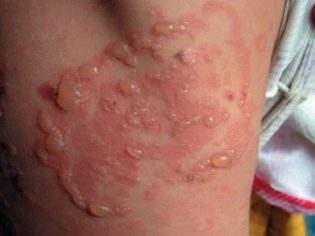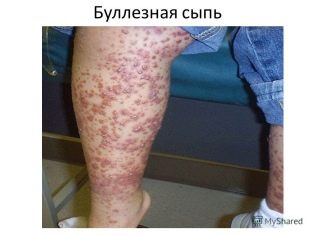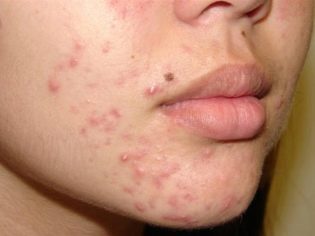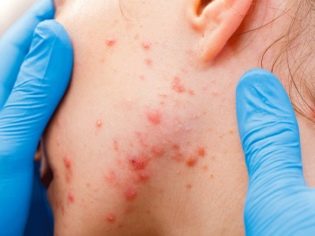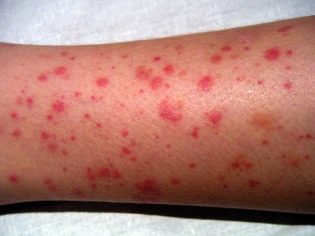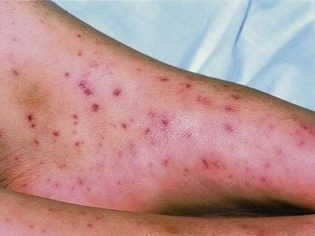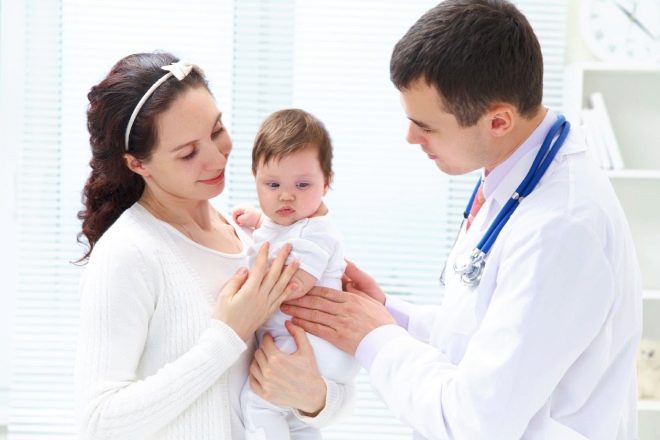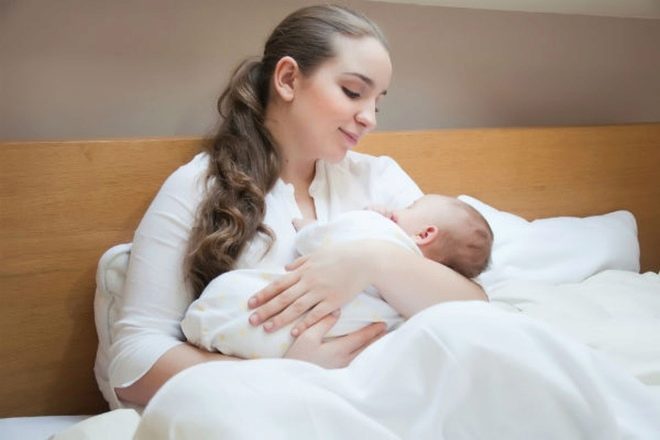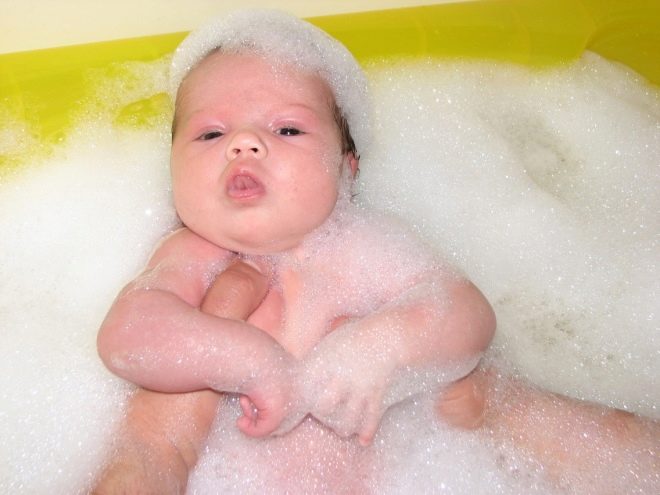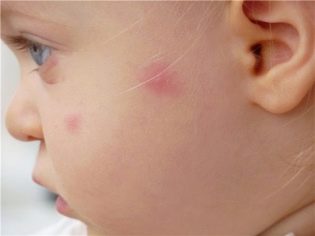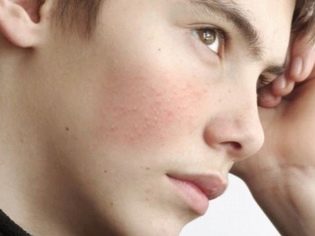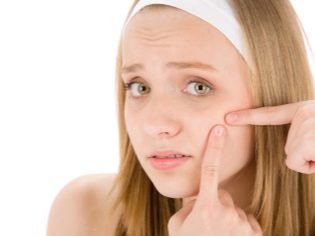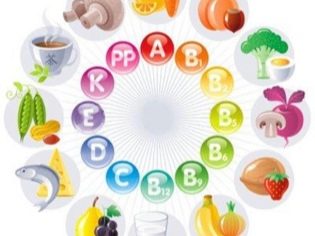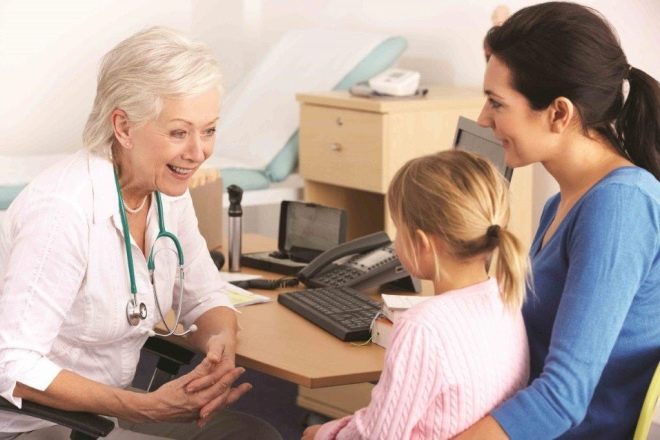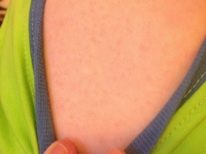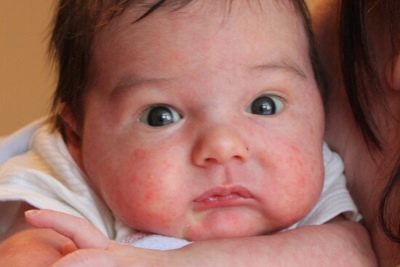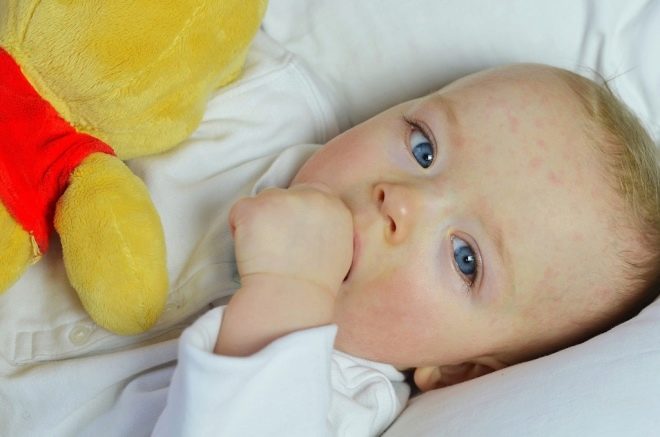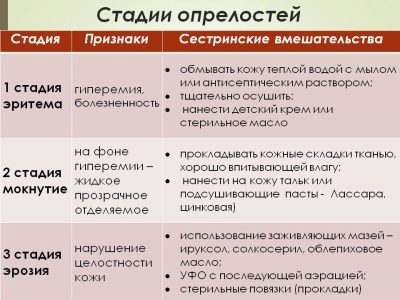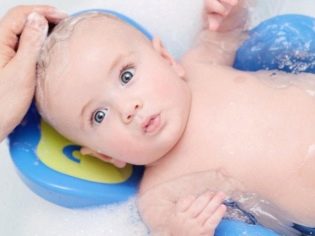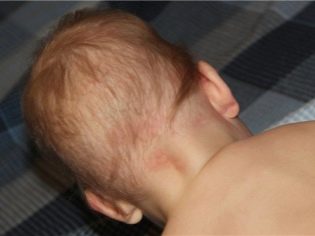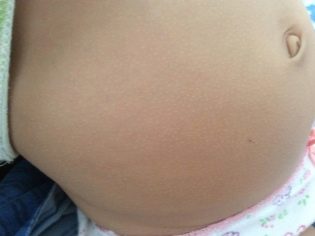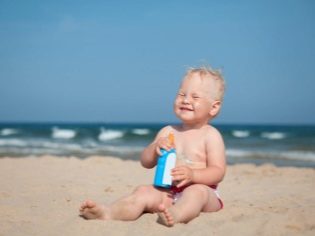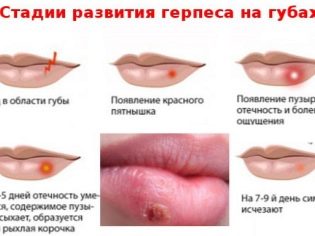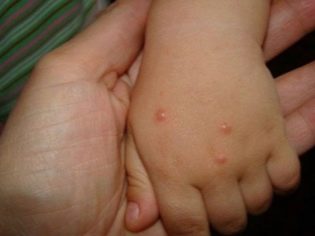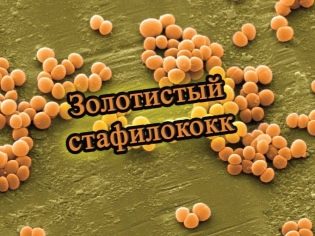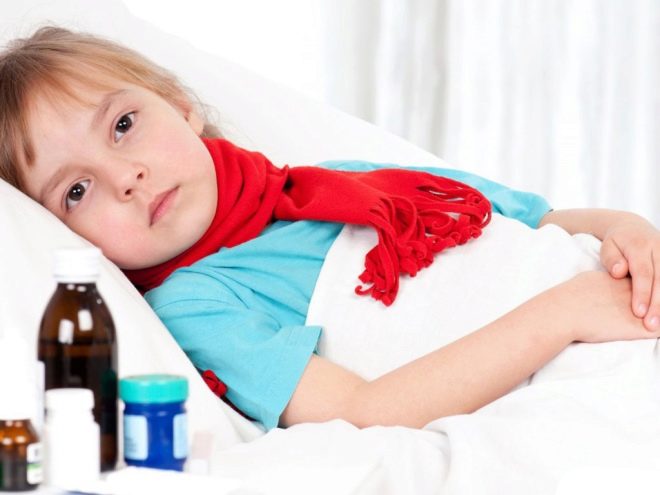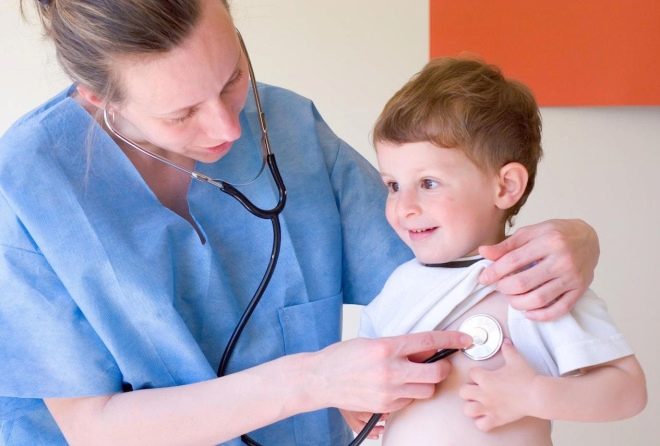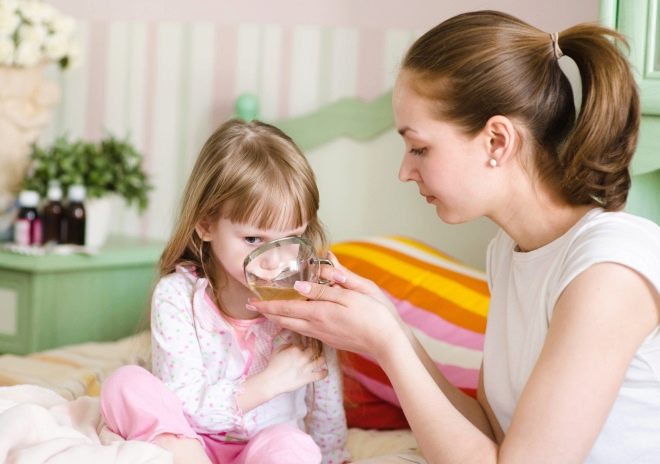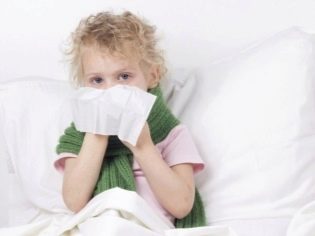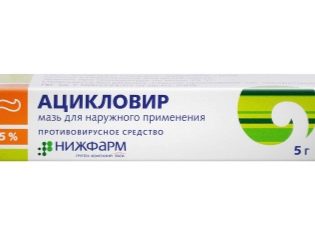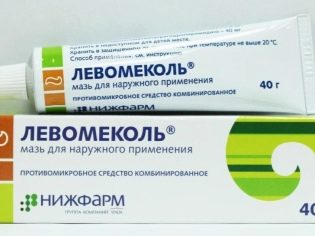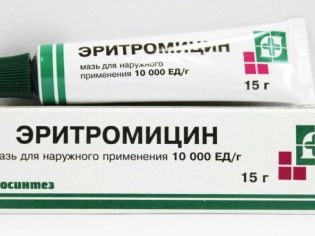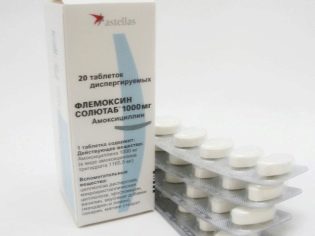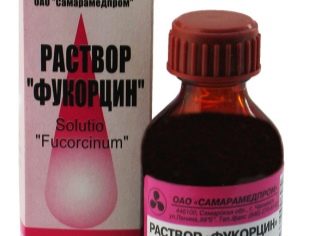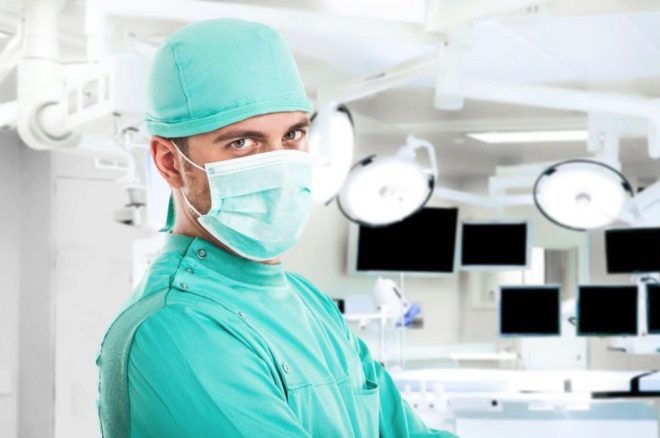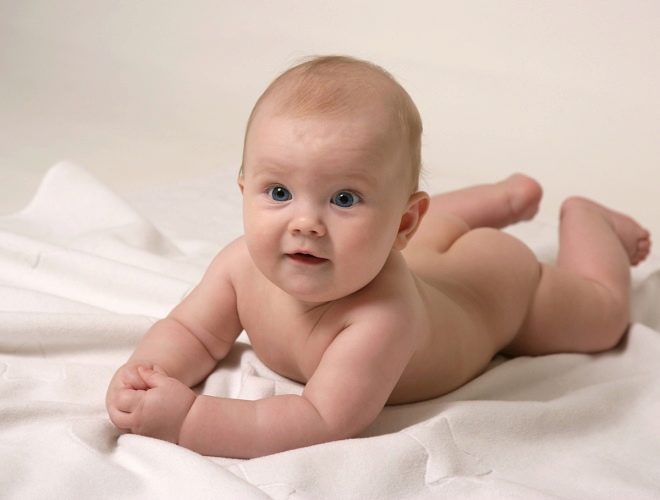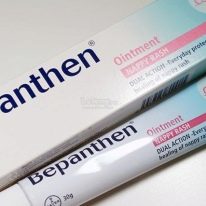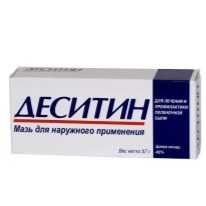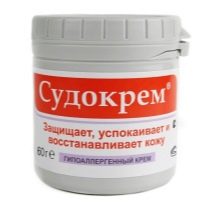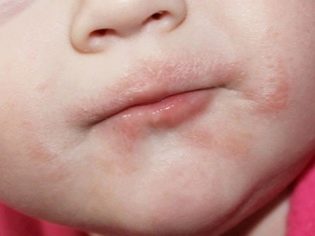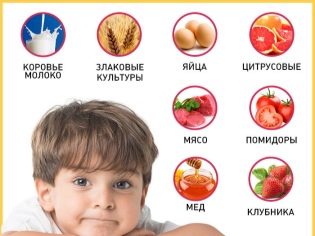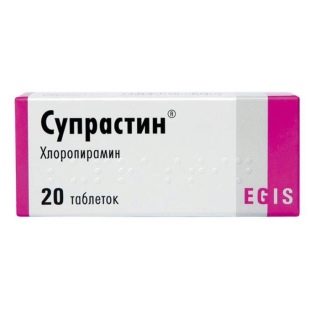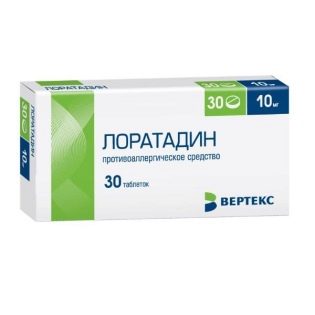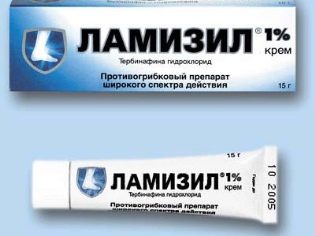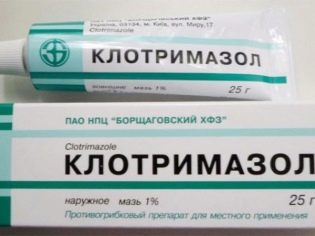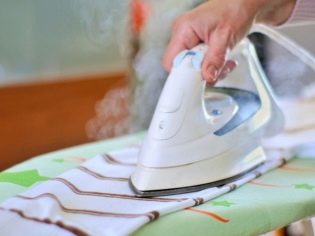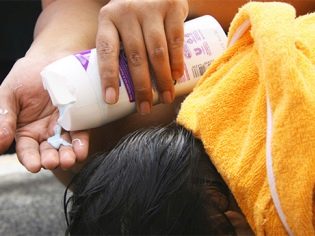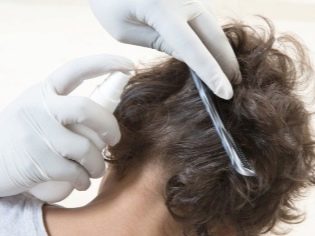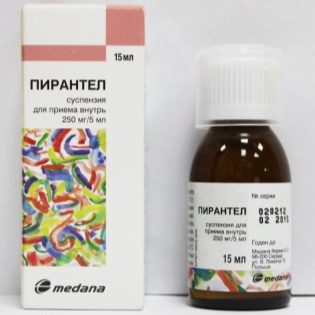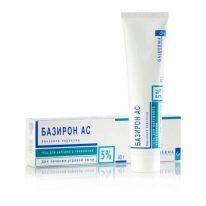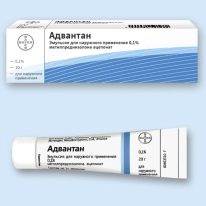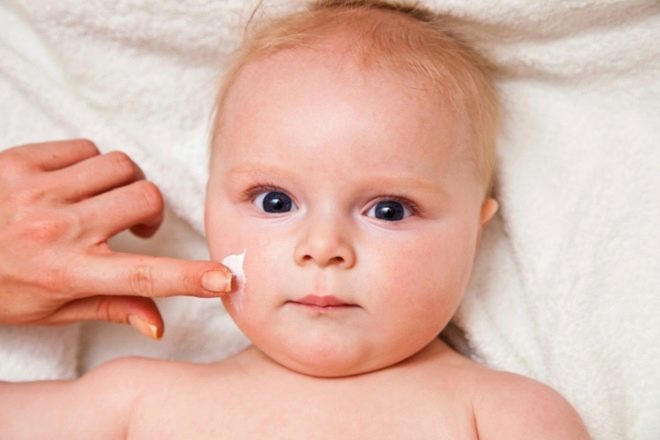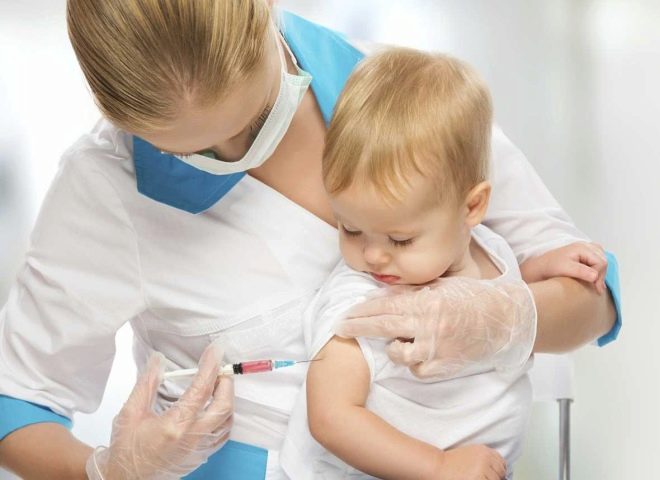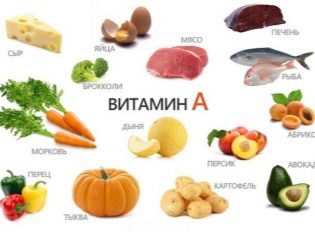Why did the child have a rash and what to do?
The parents always perceive the appearance of a skin rash with anxiety, because everyone knows that the state of the skin reflects the state of the whole body. Whether child rash is always a cause for excitement, how to understand what is happening with the child and how to help him, we will tell in this article.
Features of children's skin
The skin of children is not similar to the skin of adults. Babies are born with very thin skin - the dermis of newborns is about two times thinner than the middle skin layer of adults. The outer layer - the epidermis, compacted gradually, as the crumbs mature.
In the first month of life, the skin can be red and purple. This is due to the fact that the blood vessels in babies are located close to the surface, and the subcutaneous tissue is not enough, because of this, the skin may look "transparent." This is especially noticeable when a newborn is cold - a marbled spider veins appears on the skin.
The skin of babies loses moisture faster, it is more vulnerable to bacteria, viruses, fungi and mechanical effects. It begins to thicken only in 2-3 years and this process lasts up to 7 years. The skin of younger schoolchildren are already beginning to resemble, in terms of their characteristics and functionality, the skin of adults. But after 10 years, baby skin is waiting for a new test - this time during puberty.
It is not surprising that thin skin of a child reacts to any external influence or internal processes with rashes of various caliber, color and structure. And not every child's rash can be considered harmless.
It is important to understand that there is no causeless rash in children, any pimple or a change in pigmentation has a basis, sometimes pathological.
What is a rash?
A rash with medicine is considered to be a variety of skin eruptions that somehow change the appearance of the skin by color or texture. For parents, the entire rash is about the same, but physicians always secrete primary rashes, which formed first, and secondary - those that were formed later, in the place of the primary or next.
Different combinations of primary and secondary elements are peculiar to different childhood diseases.
How blisterl goes to the secondary stage, and what happens to it in this, plays a crucial role in determining the correct diagnosis.
Rash on baby skin occurs much more frequently and is easier than on the skin of adults. It is always caused either by external effects on the skin (sun, temperature, humidity, toxins, chemicals, etc.) or by internal processes (diseases and conditions).
A rash can be physiological and completely natural, envisioned by nature, in response to natural processes within the body.Quite often, parents have to deal with a pathological rash, which is caused by abnormalities in the body, diseases, parasites, exposure to chemicals and toxins, and other external and internal factors.
Kinds
Primary rash may be different. A lot depends on how quickly parents can navigate and determine what formations appeared on the child’s skin:
-
Lumpy rash. Each element of this rash is located deep in the dermis, that is, the rash is not superficial. There is no cavity, there is only a slight protrusion of the skin on the tubercle, it is possible to change its color (redness, violet).
-
Blisters. Blisters in the people call almost any education on the skin. But it’s right to consider as a blister a rounded education without a cavity, which is pink in color and has no content. True blisters are short-lived, they exist from several minutes to several hours, after which they disappear, leaving no traces. A good example is the nettle footprint.
-
Papular It is also called a nodular, since each papule looks very similar to nodules, which are different in color from normal skin. They can be both superficial and deep. Papules also tend to pass without leaving a trace.
- Vesicular. Vesicles are bubbles on the skin. They can be filled with serous colorless liquid or serous-bloody contents. Bubbles can be single, and can merge and create multi-chamber formations. After opening the vesicles on the skin always remains erosion, the area is comparable to the area of the bottom of the bubble.
-
Bullous This is a kind of rash with bubbles, only from bulla vesicles differ in size - each bubble has impressive dimensions of 0.5 centimeters in diameter. Filling of such bubbles can be similar to vesicular - serous fluid or serous fluid with blood impurities.
- Pustular. Pustules in medicine are called pustules. They can be located both superficially and rather deeply in the middle layers of the skin. Superficial pustules after opening do not leave marks. Ugly scars and scars can remain after the opening of medium and coarse pustules (furuncles, carbuncles).
-
Spotted. The rash does not appear on the skin and is manifested only by a change in the color of individual fragments of the integument. It can be vascular, petechial.
-
Roseola. By this name is meant a rash that is characteristic of many infectious diseases. Each element of roseola has a pink or moderately reddish color. The structure of roseola closer to the spots. If the skin is stretched or pressed on it, roseola will fade and temporarily disappear.
Hemorrhagic. These are red blood points that form at the site of a burst vessel. If the skin is stretched, hemorrhages do not disappear.
Secondary manifestations of the rash can be varied. These are scabs, in which the elements of the rash, about which we spoke above (more often bubbly or purulent), turn into a crust after opening. No less common are such secondary manifestations as cracks, erosion, flaking of epithelium flakes, abrasions, scars and ulcers.
For the root cause, a rash can be:
-
viral;
-
bacterial;
-
parasitic;
-
allergic;
-
hormonal.
Causes
The causes that cause the development of skin rashes can be varied. Very much depends on the age and general condition of the child.
In newborns and children up to a year
In newborns and babies of the first year of life, a rash is quite often physiological, which should not cause any particular concern from adults. The skin of the baby adapts to its new habitat - anhydrous, and this process is often given to the baby with great difficulty. Therefore, any adverse effects can cause a rash all over the body.
The most common rash at this age is acne hormone in which white or yellow pimples may appear on the face and neck. In this phenomenon, the parent hormones estrogen, which went to the child in the last months of the mother’s pregnancy, are “guilty”. Gradually, their effect on the body decreases, hormones leave the child’s body. By half a year from such pimples there is no trace.
Infants very often react allergic rash for unsuitable for themselves food, substances, medicines and even household chemicals, which mother uses to wash clothes and bedding and to wash floors and dishes.
Another common cause of a rash in infancy is diaper rash and prickly heat. A rash on the body, head, hands and feet at an early age also appears in infectious diseases, as well as due to violation of hygiene rules.
Too dry air in the room where the baby lives, heat, excessive diligent washing of the skin with soap and other detergents provoke drying of the skin, which only contributes to the development of different types of rash.
A slight dryness of the skin in the first 3-4 weeks after birth is a variant of the physiological norm.
The skin of a baby from birth is covered with a lipid "mantle", so called fat protective layer. "The mantle" is gradually washed off and washed off. With proper care, this temporary natural dryness is easily compensated by the children's body - the sebaceous glands gradually begin to produce the right amount of protective lubricant.
In children older than 1 year
There are not so many physiological reasons for the appearance of a rash after a year. In rare cases, hormonal imbalances caused by maternal sex hormones remain. All other cases for the most part have pathological causes. In the preschool years, children increase the incidence of viral infections, which are characterized by rash. This is chicken pox, measles, scarlet fever and other childhood diseases.
A one year old child who have not yet started attending kindergarten and organized children's groups, the risks of contracting herpes or another viral infection are lower than in children aged 3 to 7 years. Local immunity at this age begins to work better than in infants, for this reason, many bacterial skin ailments can be successfully avoided.
Preschoolers more than other children are prone to parasitic diseases, in which the rash appears as a result of the effect on the body of internal parasites (helminths) or external parasites - lice, scabby itching, skin mite.
Up to 3 years Allergens are still strongly affected by a child’s body, and therefore the appearance of rashes on different parts of the body - on the face, head, abdomen, elbows, and even on the eyelids and ears - is quite a common phenomenon after eating an allergen-containing product drug exposure, contact with pollen, animal hair, household chemicals.
But acne in the preschool years is rare. And even if it takes place, then it is most likely a metabolic disorder, a lack of vitamins, minerals, and diseases of the internal secretion organs.
In children from 10 years
After 10 years, children have only one type of physiological rash - acne teenage rashes. Under the influence of sex hormones, which begin to be produced in the body of girls and boys, the sebaceous glands are activated.
Excessive production of sebum leads to blockage of the ductal glands and the gland itself and the hair follicle become inflamed.
So on the forehead, on the nose, on the cheeks, and sometimes on the forearms, back and even the buttocks "bloom" of different size and intensity pimples and pimples.
The immunity of children is already sufficiently formed, preventive vaccinations have not passed without leaving a trace for the organism, and therefore the risk of becoming ill with “childhood diseases” in adolescence is much lower. Many children have already had them before.
In the first place among infections accompanied by rashes come bacterial and fungal lesions, parasitic skin ailments, such as scabies. This is due to lack of hygiene, inattention of the majority of adolescents to the requirements of washing their hands after the street or using bactericidal soap.
A rash in 15-16 year old adolescents can be a symptom of a sexually transmitted disease, since quite a lot of boys and girls at this age begin to have active sex life. Rashes on the skin of the face and upper body can also be a consequence of taking steroids, with the help of which young men, and sometimes girls, try to create a “beautiful relief” body for themselves while doing fitness.
Allergic rash in adolescence is not as common as younger children. Usually, if an adolescent is allergic, parents know about it and the appearance of rashes will not surprise and frighten them at all, because they already have a good idea of how to deal with it.
At any age, metabolic disorders, lack of vitamins A, E, C, PP, as well as dysbacteriosis, disturbance of the stomach and intestines, kidneys can cause a rash.
Diagnostics and self-diagnosis
To understand the causes of the rash can pediatrician, allergist, gastroenterologist and infectious diseases.
Standard methods are used for diagnostics - blood, urine, feces. Quite often, skin samples, samples of the contents of vesicles and pustules are taken for analysis. This allows you to establish not only an accurate diagnosis, but also the type and type of pathogen, if we are talking about an infection, as well as to which drugs the pathogens are sensitive.
Self-diagnostics includes a set of simple actions to assess the situation.
Parents should undress the child, examine the skin, note the nature of the rash (vesicles, pustules, papules, etc.), its vastness. After that, the child should be measured body temperature, inspect the throat and tonsils, note the remaining symptoms, if any, and decide to call a doctor.
Small red
This is one of the most common types of rash, and parents of children of any age, but most often early, preschool and primary school children can face it.
On the body
Small rash without suppuration on the stomach, back, buttocks can be a bright and characteristic symptom allergies. In children up to the year, a small red rash under the arms, on the shoulders, on the buttocks and in the perineum may also indicate the presence of hemorrhage and diaper rash.
If red skin rashes capture a large area of the body, you should think about toxic erythema.
It is important to recall and analyze what preceded the appearance of the body rash.
If the child is nauseous, vomiting, he had diarrhea, then we can talk about the pathologies of the gastrointestinal tract, if the rash appeared after the temperature and it is red-pink, then it is probably herpesvirus that causes a rash of children.
In most cases, the appearance of a small red rash on the body is a sign of an infectious disease, for example, rubella.
On the face
Such a rash on the face may indicate an allergic reaction to food, medicine or cosmetics. The rashes themselves in case of allergies do not have purulent cavities, blisters.
Most often in younger children, an allergic rash is localized on the chin, cheeks and behind the ears, and in older children - on the forehead, in the eyebrows, on the neck, on the nose. Rarely, allergic rashes affect only the face, usually the rash is found on other parts of the body.
On the face, a red rash appears in some viral diseases. If the child did not eat anything suspicious and new, did not take medicines, led a normal life, then with rashes on his face, it is necessary to measure the temperature and call a doctor. The temperature usually rises, and the doctor diagnoses chickenpox, measles, or another infection.
In this case, the child has signs of ARVI - malaise, headache, runny nose, cough.
On arms and legs
In children of the first year of life, a reddish small rash on the extremities can be a sign of allergy (like urticaria), as well as a consequence of overheating and violation of hygienic rules - diaper rash.
The rash is usually located in the skin folds - under the knees, on the crook of the elbow on the inside, in the groin area.
Red rash of various sizes and types can affect the pens and legs of a child with viral and bacterial infections, scarlet fever, and leukemia. With measles, the rash appears on the palms and feet. The appearance of red rash on the extremities is always a reason to call a doctor to the house.
On the head
The scalp is usually covered with a red rash during allergic reactions, including to hair care products, to soap. In children, the most likely cause of the rash is another - prickly heat. Since with the help of the scalp the babies perform thermoregulation, it is she who reacts to overheating and sweating. Also, this symptom may indicate a viral infection.
Colorless
It can be difficult for parents to notice a colorless rash, but this is a fixable matter, since any colorless rash will sooner or later manifest itself more clearly. Most often, a rash without pronounced color signals the starting stage of an allergy.
On the body. An almost imperceptible rash of a certain color or very pale, appearing on the body, may cause a touch of rough when touched.goose bulls". It is like goosebumps that “run” over the skin during a fright or chill. Rashes are close to each other and sometimes massive. There is an assumption that such a rash - a consequence of hormonal "bursts".
On the head. On the face and head, a rough, colorless rash appears usually with lactose deficiency. Usually this is accompanied by intestinal disorders, the child often has a liquidish, greenish stool with an unpleasant odor.
Watery
A watery rash can be a strong symptom of a herpes infection, as well as impetigo, streptococcal angulitis and even sunburn.
On the body. If bubbles filled with fluid appear on the sides and extremities, it is likely that the child has become bullous impetigo. A long stay in the sun also causes blistering skin lesions in children, but the skin will look reddened and somewhat edematous. On the stomach and back bubbles may appear with chickenpox.
Often, vesicles on the body are caused by an allergic reaction, as well as by insect bites.
- On the face. Watery rashes on the face manifest as herpes diseases. In the nasolabial triangle, around the lips, a simple virus appears in the nose. herpes. Similarly may manifest streptoderma and mug.
On the arms and legs. Bubbles on the limbs can be a sign of dyshidrosis - blockage of sweat glands. On the palms and heels, bubbles appear in some fungal diseases. The extremities are covered with watery rash and chickenpox. Also, bulls and vesicles on their hands may indicate that the child has been in contact with poisons, alkalis, and acids or other toxic substances that have caused a local reaction of the type of chemical burn.
In the intimate area. A watery, medium-sized rash on the genitals, in the groin and on the thighs from the inside, as well as in the anus, may appear when the herpesvirus of the second type is sexual herpes. Allergies to skin care products for babies are almost the same.
Pustular
Pustular purulent rash peculiar to bacterial infections. Staphylococcus aureus is the most common causative agent, but epidermal staphylococcus and streptococcus and several dozen other microbes can cause inflammation.The development of such a rash contribute to microtrauma on the skin, scratches and wounds, through which the microbe penetrates inside. Bacterial skin rash is manifested in a weakened children's immunity.
- On the body, face and limbs. Abundant or single purulent rash may be accompanied by a staphylococcal infection. Sometimes the pustules are secondary. If at first the rash was just itchy and itchy, and the child was brushing it, then that was the reason for the bacterial infection and the appearance of pustules. On the knees, elbows in children, pustules can appear due to frequent injuries of the skin during numerous falls. Deep ulcers are furunculosis.
- In the throat. Pustules on the tonsils - a characteristic symptom of angina.
Disease table by type and localization of rash
Disease | Rash type | Places of defeat | Time of appearance | Other symptoms | Do I need a doctor? |
Rubella | Small patches of pinkish color | The whole body, most strongly - on the face, back, bottom, hands. | 1-2 days from the onset of the disease | Temperature, headache, muscle pain. | Yes |
Scarlet fever | Red dotted rash | Folds of arms and legs, sides. | 1-2 days after the onset of the disease | Temperatures above 39.0, nausea and vomiting, abdominal pain | Yes |
Measles | Large spots prone to merge | It starts with the face and covers the body and limbs | 3-5 days | Temperature up to 40.0, intoxication, respiratory phenomena | Yes |
Infectious mononucleosis | Small spotted, pink-red | On the body, less often - on the face | 2-4 days and later | Temperature above 39.0, oropharyngeal inflammation, altered throat, muscle aches, swollen lymph nodes | Yes |
Chickenpox | Small and medium, tubercles, vesicles and pustules | On the body, on the limbs, on the stomach, on the sternum, in the groin, on the scalp. Does not happen on the palms and soles | Immediately or 1-2 days | Temperature increase, intoxication, moderate respiratory manifestations | Yes |
Allergy | Small red, pink, extensive, bubbles, hives | Any part of the body with systemic allergy, adjacent - with contact | In a few hours - a few days | Eating Disorder - with a food or medicinal form (not always), no other symptoms | Yes |
Acne | Pustules and comedones (white and black spots) | Face, neck, forearm, back, buttocks. | Right away | Absent | Not always |
Herpes simplex | Vesicles | Face, lips, nose, chin | Right away | None. Less often - general weakness and malaise, itching | Not always |
Genital herpes | Vesicles | Sex organs, groin, hips, anus | Right away | Itching, malaise, pain | Yes |
Pemphigus | Vesicles and pustules | Scalp, skin folds, butt | Immediately after birth - in congenital form, one week after birth - in case of acquired form | Temperatures above 38.0, moodiness and anxiety, possible lack of appetite. | Yes |
Bubbles, eczema | Hands, feet, neck, face, natural skin folds, space around the navel | Delayed allergic reaction | There may be a slight increase in body temperature, appetite and sleep disorders, behavior change - anxiety, moodiness | Yes | |
Enterovirus Infection (Coxsackie) | Red and yellow-red rash quite extensive | Palm, foot, face, chin | 2-3 days after the onset of the disease | Temperature increase to 38.0, | Yes |
Meningococcal infection | Small red or bluish rash - hemorrhage in the form of a vascular "asterisk" | Face body | Initial stage of the disease | Temperature rises above 38.0, dry cough, runny nose, headache, intoxication, nausea, vomiting | Yes |
Prickly heat | Small and medium blistering rash with whitish content | Head, neck, ear region, skin folds, shoulders and groin area | Immediately, the symptom is independent | Absent | Not always |
Children's roseola | Roseola type | Throughout the body, in the scalp | On the 3rd day after the temperature | Fever with high fever and minor respiratory events precedes. Rash on the third day | Not always |
Scabies | Pustular and tubercles | Interdigital space, abdomen, hips, hands, knees | After several days of itching from scratching | Itching, worse at night, the presence of "scabby moves" next to the elements of the rash | Yes |
This is not a complete list of diseases that occur with the formation of a rash.
Most of the diseases, as can be seen from the table, need a mandatory medical consultation, some, for example, meningococcal infection and scarlet fever, require emergency medical care.
When a rash appears in a child that does not resemble acne or prickly heat, it is necessary to show the child to a pediatrician or dermatologist in order to rule out dangerous and serious infectious diseases, pathologies of internal organs that affect metabolism and digestion.
It is important to remember that many infections that appear on the skin can be very contagious. Therefore, it is not necessary to take the child to the polyclinic at the place of residence in order not to infect others in the general queue. It is best to call a pediatrician at home.
If possible, you can take the child to a specialized infectious diseases hospital, where it is possible to quickly undergo the necessary examination and confirm or deny the infection.
Treatment
Treatment of the rash does not always require only local effects, most often it is a whole set of measures aimed at changing the child’s living conditions, revising his diet, and taking medications.
A rash should be treated only after the true cause of its occurrence is known, because the wrong treatment can only aggravate the condition of the child. Depending on the true nature of the skin rash, different treatments will be given.
Infectious viral
The rash that accompanies most "childhood" diseases (chickenpox, measles, scarlet fever, and so on) does not need treatment. No medicines and folk remedies can affect its duration.
The rash passes when the immune system produces a sufficient amount of antibodies and completely cracks the virus into the body.
Depending on the severity of the disease itself, immunomodulatory drugs, antivirals, vitamins, antipyretic drugs are prescribed by the doctor.
An abundant warm drink is indicated for a child with a viral infection.
Most of the antiviral drugs that are sold in pharmacies, there is no effect, they do not have proven effectiveness. Many popular homeopathic remedies are also essentially a “dummy” with a placebo effect.
But nothing else is required of these drugs, because viral infections pass on their own, with or without pills. The drugs are prescribed so that the parents have something to do on the hospital and that the doctor is not accused of inattention.
Usually, the treatment of a viral infection takes from 5 to 10 days, after the disappearance of the rash there are no traces. The exception is chickenpox, in which damaged vesicles can leave fairly deep, life-long pits on the skin.
A rash caused by herpes viruses (on the face, on the lower back, on the genitals) is much less itchy and sore if you apply the cream Acyclovir.
Infectious bacterial
A pustular rash caused by pathogenic bacteria is treated with antibiotics and antiseptics. Moreover, antibiotics are selected after analysis on baccosis, when the doctor has clear information about which bacteria have caused suppuration and to which antibacterial agents they demonstrate sensitivity.
Usually children are prescribed penicillins, less frequently cephalosporins. With a mild infection, local treatment with ointments with antimicrobial action is sufficient - "Levomekol», «Baneocin, Erythromycin ointment, gentamicin ointment, tetracycline ointment.
In some cases, an extensive or severe infection or infection that risks spreading to internal organs is prescribed antibiotics inwards - for babies in the form of a suspension, for preschool children and teenagers - in pills or injections.
Preference is given to broad-spectrum drugs, usually the penicillin group - "Amoxiclav», «Amosin», «Amoxicillin», «Flemoxine Solutab". With the ineffectiveness of the funds in this group, cephalosporin antibiotics or macrolides may be prescribed.
As antiseptics Well-known aniline dyes are often used - a solution of brilliant green (brilliant green) with a staph infection or "FukortsinWith streptococcus. Damaged skin is treated with salicylic alcohol.
Simultaneously with antibiotics, if they are administered orally, the child is recommended to take drugs that will help prevent the occurrence of dysbiosis - Bifiborm, Bifidumbakterin. It is also useful to start taking vitamin complexes, corresponding to the age of the child.
Some purulent rashes, for example, boils and carbuncles, may require surgery, during which the formation is incised crosswise under local anesthesia, clean the cavity and treated with antiseptics and antibiotics. Fearing such a mini-operation is not necessary.
The consequences of abandoning it can be very deplorable, because staph infection can lead to sepsis and death.
Prickly heat and diaper rash
If a baby has prickly heat, then it is a signal for parents to change the conditions in which the child lives. Temperature condition should be at the level of 20-21 degrees of heat. The heat of the heat increases. Irritation from sweat, although it gives the child a lot of painful sensations and pain, can be treated rather quickly.
The main cure for this is cleanliness and fresh air. To wash the child should be warm water without soap and other detergent cosmetics. Several times a day you need to arrange your baby air bath naked. It is not necessary to muffle a child, and if he still perspires, for example, during a walk on the street in a warm jumpsuit in winter, then immediately upon returning home, pay back the child in the shower and change into clean and dry clothes.
With strong diaper rash, damaged skin is treated 2-3 times a day. The most thorough and thorough - after the daily evening swim. After it, the still wet skin with signs of chilli is applied “Bepanten"," Desitin ","Sudokrem". It is necessary to use powder with great care, since talcum very strongly dries the skin.
It is forbidden to apply baby cream or any other fat creams and ointments to the skin of a child with prickly heat, as they moisturize, not dry. You should also avoid getting on the diaper rash of massage oil during evening restorative procedures.
Allergic
If the rash is allergic, the treatment will be to find and eliminate the interaction of the child with the allergenic substance that caused the skin rash. To do this, the allegologist conducts a series of special tests using test strips with allergens. If you can find the protein that caused the rash, the doctor makes recommendations to exclude everything that contains such a substance.
If the antigen protein cannot be found (and this happens often), then parents will have to try and exclude from the child’s life everything that poses a potential threat - plant pollen, food (nuts, whole milk, chicken eggs, red berries and fruits, some types of fresh greens and even some types of fish, an abundance of sweet).
Especially carefully have to treat the care of the skin of the child.
Usually eliminating the allergen is more than enough to stop the allergy, and the rash disappears without a trace. If this does not happen, as well as in severe allergies, the doctor prescribes antihistamines (“Tavegil», «Tsetrin"," Suprastin ","Loratadine" other).
Simultaneously with them, it is desirable to take calcium supplements and vitamins. Locally, if necessary, child use hormonal ointment - "Advantan", eg. Severe forms of allergy, in which, in addition to skin rashes, there are pronounced respiratory manifestations, as well as internal pathologies, the treatment of the child is carried out permanently.
Fungal infections
Fungal infections are very contagious, so the child must be isolated. Toddlers are treated permanently. Older children in an infectious diseases hospital will be put in case of moderate and severe disease. As a local treatment prescribed antifungal ointment - "Lamisil", "Clotrimazole», «Fluconazole" other.
In case of extensive lesions, when the colonies of the fungi “settled” not only on the limbs, on the wrist, on the legs or on the neck, but also on the nape of the scalp, the child is prescribed in addition to ointments antifungal agents in pills or injections.
At the same time, doctors recommend taking immunomodulators, as well as antihistamines, since the waste products of fungal colonies often cause an allergic reaction. Treatment for fungi - the longest, after the first course, which lasts from 10 to 14 days, must be prescribed a second, "control", which should be carried out after a short break.
Parasitic infections
Treatment of a parasitic infection will require large-scale hygiene measures from parents, since all such diseases are infectious. Children are isolated from other children, they report scabies or pediculosis in a kindergarten or school, so that these institutions can quarantine and possibly identify new ones that are infected.
At home, all things and bedding of a sick child are subject to thorough washing and ironing. He cannot be bathed during treatment.
The time has passed when the treatment of such diseases was rather painful. There is no need to dust your head with lice or smear your skin with kerosene.
Modern remedies in the form of shampoos and solutions for pediculosis and ointment from scabies and a number of other parasites have a pleasant smell.
Most children's lice and nits need only a single application. Permethrin-based products are most effective in pediatric practice.
When treating it is important to observe safety measures. Almost all means are toxic, we can not allow them to fall into the eyes and ears, mouth and mucous membranes of the baby.
Helminthic invasions
After determining the type of parasite, it is recommended to first cleanse the body of the child from the waste products of worms. To do this, within 2-3 days should be taken chelators, eg, "Enterosgel". Only after this antihelminthic drugs are prescribed.
At the same time children are discharged antihistamines, so that their body can more easily overcome not only intoxication with worms, but also the effects of taking drugs against parasites.
What specifically to treat with giardiasis, roundworms or pinworms, the doctor decides. Not all drugs that are effective in adolescence are suitable for treating toddlers and younger students. The most commonly prescribed drugs are Pirantel, Albendazole, Levamisole and Piperazin.
It is not recommended to treat parasites with traditional medicine, because even if the effect of eating lemon and garlic is present, it will not be soon, and after the drug most helminthic invasions die for several hours already. During treatment, the child should follow a diet.
Teenage acne
Cure adolescent acne is impossible, but you can ease its manifestations.To do this, parents must explain to the teenager that it is impossible to squeeze acne, it is also undesirable to treat them with alcohol or lotions.
They treat pubertal acne in a complex way, changing the diet of the child, eliminating from it fatty, fried, smoked and pickled food, fast food. Affected by acne skin is smeared twice a day with salicylic alcohol and one of the modern means in the form of a cream or ointment.
Zinc Ointment Zinc is very effective. If acne is complicated by purulent bacterial infection, apply antibiotic ointment - chloramphenicol, erythromycin.
Children cream and other fat creams on the skin with acne in no way be impossible.
Other effective drugs for adolescent rash on the face, back and chest are Baziron AU, Adapalen, Skinoren. In some cases, the doctor may recommend hormonal ointment - "Advantan, "Triderm". This is true for deep and very strong rash.
At the same time prescribe vitamins A and E in an oil solution or in the composition of vitamin-mineral complexes. Treatment for pubertal acne takes a lot of time. If you follow all the recommendations of a dermatologist, sometimes it takes from 2 to 6 months to achieve the effect.
Neonatal hormonal rash
Acne neonates or a three-week rash need no treatment. All skin rash will disappear after the baby's hormonal background returns to normal. Usually it takes about a month or two. It is useful to wash the child with a decoction of chamomile medicine, put children's cream on pimples on the face and neck, sprinkle them with powder. Attempting to squeeze or burn with alcohol is strictly prohibited.
Prevention
Since the skin of a child needs special care and protection, properly constructed hygiene and an understanding of the approach to the treatment of dermatological ailments in children will be an excellent prevention of the appearance of a pathological rash.
-
To avoid 90% of skin problems will help the healthy microclimate of the skin. The air temperature should not be higher than 21 degrees Celsius, and the air humidity should be 50-70%. Such conditions will not allow the skin of the child to dry up, crack, and therefore the prerequisites for the development of severe bacterial infections will be less. It is especially important to follow this rule if there is a small child in the house.
-
It should be timely to do all of the child prophylactic vaccinations. This will help protect it from dangerous infectious diseases - measles, diphtheria and several others. Vaccination is not a guarantee that the child will not get sick with this infection at all, but it guarantees that in case of illness the illness will proceed more easily and with less health consequences.
- When going to the sea, it is important to ensure that the skin of the child is protected. To do this, you need to buy a sunscreen appropriate for age and skin type. And to protect the baby from rotavirus, it makes sense to make a vaccine in a paid clinic that is not on the list of mandatory - a vaccine against rotavirus infection.
-
Proper hygiene - the guarantee of health of children's skin at any age. It is a mistake to wash a child rarely, but it is no less mistaken to wash it too often. Apply soap for babies should not more than once every 4-5 days, shampoos up to a year is better not to use at all.
It is important to choose child care products that are specifically designed for children and are hypoallergenic. Antibacterial soap kills not only pathogenic bacteria, but also beneficial ones, and therefore its use without the need is not at all justified.
-
Children's skin should not be exposed to hard scourers, bath brushes, brooms. After bathing, the skin should not be wiped off, but should be soaked with a soft towel, this will keep the skin whole and sufficiently moist.
-
Wash baby when changing diaper you need only under running water, and not in the basin or in the bathroom, to avoid the ingress of intestinal microbes on the skin, external genital organs and urinary tract.Girls are washed away from the pubis to the anus.
-
When rash appears can not self-medicate.
-
In a house where children grow up, should never be freely available chemicals, acids and alkalis, aggressive household cleaning products.
-
Small children should buy bed linen and clothes only from natural fabrics. Let them look more modest and unobtrusive, but there will be no irritating effect on the skin of synthetic fabrics, seams and textile dyes that paint bright and inviting children's things.
-
For the health of the skin in the diet of the child is always There should be enough vitamins A and E. From childhood, you need to teach your son and daughter to eat fresh orange and red vegetables, greens, sea fish, lean meat, dairy products with sufficient fat, butter, oatmeal and buckwheat porridge.
The skin of the child from early childhood should protect from excessive exposure to strong wind, frost, direct sunlight. All these factors drain it, dehydrate it, as a result it becomes more vulnerable and susceptible to various infections.
No scabs, pustules and bubbles on the baby’s skin cannot be mechanically removed and opened at home, far from sterility. Most of the cases with the accession of the infection to the seemingly harmless rash are connected precisely with the attempts of parents to rid the child of pimples or vesicles on their own.
In addition, the doctor will tell about the main causes of the rash in children. Komarovsky in the next video.
